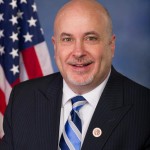Just How Purple Is Wisconsin?
Election results going back three decades show an almost perfectly divided state.

Purple skies over Kettle Moraine State Forest – Pike Lake Unit. Photo by Yinan Chen, Public Domain, via Wikimedia Commons.
National pollsters and pundits rate Wisconsin’s elections on Nov. 8 for U.S. Senate and governor as “toss-ups,” within the surveys’ margins of error or give a slight advantage to the bid by Democratic Gov. Tony Evers for a second term.
There is good reason for Wisconsin’s reputation as an election-year “purple” state, where top-of-the-ticket candidates from either party can win. Some voters — especially independents — take pride in living in a state not automatically painted red or blue.
The last three decades of elections suggests “Too Close to Call” could replace “Forward” as the state motto. Of 34 elections for statewide office since 1990, Democrats have won 18; Republicans, 16.
Republicans won six elections for governor since 1990: Tommy Thompson, three times and Scott Walker, also three times, including the 2012 recall vote Walker survived after his Act 10 changes ended collective bargaining for most public employees. But Democrat Jim Doyle won five statewide elections, two for governor and three as attorney general. And, since 2002, Republicans won three elections for attorney general; Democrats, two. Five Republicans and two Democrats won state treasurer elections over that same period.
One caveat: The Democrats’ 18 wins over three decades includes six by Democratic Secretary of State Doug La Follette, whose constitutional office has been stripped of all major functions by Republican governors and legislators.
At first glance presidential votes might look more lopsided: Democratic candidates for president have won seven times since 1992. Donald Trump was the only Republican winner over that period, in 2016.
State Senate recalls have mostly resulted in the survival of incumbents in both parties: Ten Republican state senators who voted for Act 10 faced recall elections in 2011-12, and seven survived those historical votes. Republican senators voted out of office were Randy Hopper, of Oshkosh; Dan Kapanke, of LaCrosse, and Van Wanggaard, of Racine. But voters returned Wanggaard to the Senate in the November 2012 election.
Three Democratic state senators who faced recall votes over the controversies of 2011, which included their leaving the state to avoid voting on Act 10, survived.
How about Supreme Court elections? Although Wisconsin’s Constitution says elections for the state Supreme Court are non-partisan, both political parties have worked hard to elect specific candidates, especially in the last three elections. Democratic-endorsed Supreme Court candidates won in 2019 (Rebecca F. Dallet) and in 2020 (Jill Karofsky). But the Republican-backed Brian Hagedorn, who served as Walker’s chief counsel before the governor appointed him to the Court of Appeals in 2015, won in 2019.
UW-Madison Political Science Professor David Canon cited more examples of “purple” Wisconsin. “Wisconsin is one of only six states with a split U.S. Senate delegation,” Canon said. “Not only that, Senators (Republican Ron) Johnson and (Democrat Tammy) Baldwin are among the more ideological extremes.”
The equal numbers of years Democrats and Republicans have served as governor is unusual, Canon noted. “With the exception of Tommy Thompson’s 14 years, we have always divided evenly between Democrat and Republican governors. In the 20 years since Thompson left office, the governorship has been held by Democrats and Republicans for 10 years each,” Canon said, adding:
“In the 36 years that preceded Thompson (1951-1987) Democrats and Republicans both held the governor’s office for 18 years each So we have a long tradition of being a purple state.”
All signs point to two more close elections on Nov. 8. The latest Marquette University Law School poll gave Johnson a 49% to 48% lead over his Democratic opponent, Lt. Gov. Mandela Barnes, and Evers a 47% to 44% lead over his Republican opponent, Tim Michels.
Both leads were within the poll’s margin of error of 4.9%. Yes, too close to call.
Steven Walters started covering the Capitol in 1988. Contact him at stevenscotwalters@gmail.com
If you think stories like this are important, become a member of Urban Milwaukee and help support real, independent journalism. Plus you get some cool added benefits.
The State of Politics
-
RNC Brings Fame to Gen Z Party Leader
 Jul 15th, 2024 by Steven Walters
Jul 15th, 2024 by Steven Walters
-
Wisconsin’s Republican Roots Run Deep
 Jul 8th, 2024 by Steven Walters
Jul 8th, 2024 by Steven Walters
-
Feuding Supreme Court Justices Need a Break
 Jul 1st, 2024 by Steven Walters
Jul 1st, 2024 by Steven Walters





















